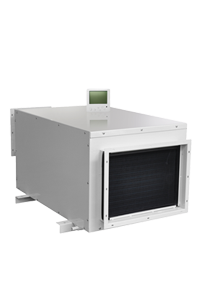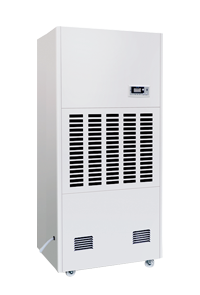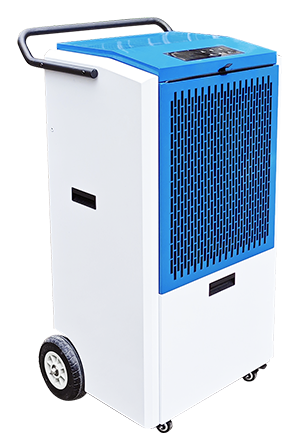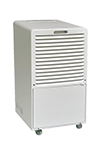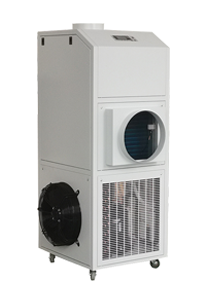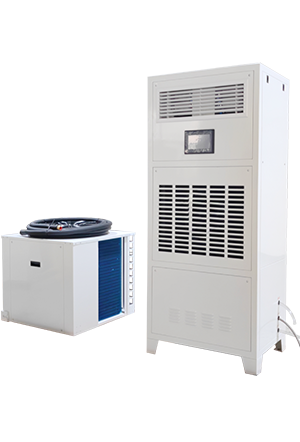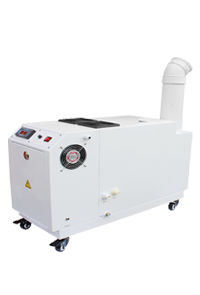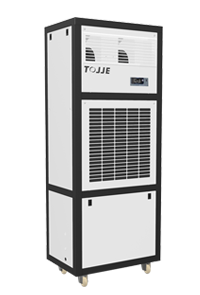News
An efficient ceiling-mounted dehumidifier is an excellent solution for controlling humidity in environments such as basements, large rooms, warehouses, and commercial spaces where floor space is limited. These systems help maintain air quality, prevent mold growth, and protect equipment from moisture damage. Here’s an overview of what makes them ideal and how they function:
Key Features:
-
Ceiling-Mounted Design: These dehumidifiers are installed on the ceiling, saving valuable floor space and keeping them out of the way. This design is especially beneficial for areas with limited floor room or high traffic where floor units could be obstructive.
-
High Efficiency: Ceiling-mounted dehumidifiers are designed to remove large amounts of moisture from the air while operating efficiently. They are often used in commercial settings, industrial spaces, or large homes where high humidity can be problematic.
-
Integrated Drainage Systems: Many units come with a continuous drainage option, which means the dehumidified water is automatically expelled via a hose or pipe to a drain, so there’s no need for manual water removal.
-
Adjustable Humidity Levels: These dehumidifiers usually offer the ability to set and control the desired humidity level, allowing precise humidity regulation for different environments.
-
Quiet Operation: Given that they are mounted overhead, many ceiling-mounted dehumidifiers are engineered to operate quietly, reducing noise pollution in commercial or living spaces.
-
Air Filtration: Some models come with built-in air filters that help remove dust, allergens, and other airborne particles, enhancing indoor air quality while dehumidifying the space.
-
Energy Efficiency: Efficient ceiling-mounted dehumidifiers often use less power than traditional models due to advanced compressors and fan designs. Many units are Energy Star certified, ensuring lower operational costs over time.
Applications:
-
Commercial and Industrial Spaces: Ceiling-mounted dehumidifiers are ideal for spaces like warehouses, server rooms, gymnasiums, and restaurants where consistent humidity control is required to protect goods, equipment, and structural integrity.
-
Large Residential Areas: For homes with large, open living areas, or in regions with high humidity, ceiling-mounted units provide an unobtrusive and effective way to maintain comfort levels.
-
Basements and Crawl Spaces: In homes with damp basements or crawl spaces, a ceiling-mounted dehumidifier helps prevent mold growth, water damage, and musty odors without taking up floor space.
-
Indoor Pools and Spas: Spaces with indoor pools or hot tubs often require powerful dehumidification to prevent excessive moisture buildup, which can lead to structural damage, corrosion, or mold.
Advantages:
-
Space-Saving: Since the dehumidifier is mounted on the ceiling, it frees up floor space for other uses or storage, which is a significant benefit in cramped or busy environments.
-
Discrete Operation: Being placed overhead keeps the unit out of sight, making it ideal for environments where aesthetics matter, such as offices, retail spaces, and high-end residential areas.
-
Enhanced Air Circulation: By drawing in and expelling air from a higher point, ceiling-mounted dehumidifiers can help improve air circulation across a broader area, ensuring that the entire space is evenly dehumidified.
-
Reduced Maintenance: Many ceiling-mounted units are designed for low maintenance with washable air filters and automatic drainage systems, reducing the need for frequent upkeep.
Popular Brands and Models:
-
Desiccant Technologies (DST): Known for providing high-efficiency desiccant-based dehumidifiers that are effective in large commercial and industrial settings.
-
Dri-Eaz: Dri-Eaz offers a range of powerful and reliable ceiling-mounted dehumidifiers for industrial spaces, with advanced moisture removal and filtration technology.
-
AprilAire: They provide high-capacity dehumidifiers for residential and commercial use that are ceiling or wall-mounted and energy-efficient.
-
Munters: Known for their heavy-duty industrial dehumidification systems, Munters specializes in climate control solutions for warehouses, manufacturing facilities, and large-scale commercial spaces.
Installation Considerations:
-
Proper Placement: For maximum efficiency, ensure the unit is mounted in an area where airflow is unobstructed. It should be centrally located if possible to distribute dehumidified air evenly throughout the space.
-
Electrical and Drainage Access: Ceiling-mounted dehumidifiers will need access to power and a drainage system. Ensure that there is a nearby electrical outlet and a place to route the drainage line, such as a sink, sump pump, or outdoor drain.
-
Weight Support: Ensure the ceiling structure can support the weight of the dehumidifier. You may need to reinforce the ceiling or install mounting brackets, depending on the size of the unit.
-
Ventilation: Some dehumidifiers may need ductwork or vents to ensure proper airflow, especially in large or enclosed spaces. Consult the manufacturer’s specifications for ventilation requirements.
An efficient ceiling-mounted dehumidifier is a practical and effective solution for controlling humidity in a wide variety of settings. With advancements in energy efficiency, ease of use, and design, these systems offer high-performance dehumidification without taking up valuable floor space. By preventing excess moisture, they help protect both health and property from the harmful effects of high humidity.

